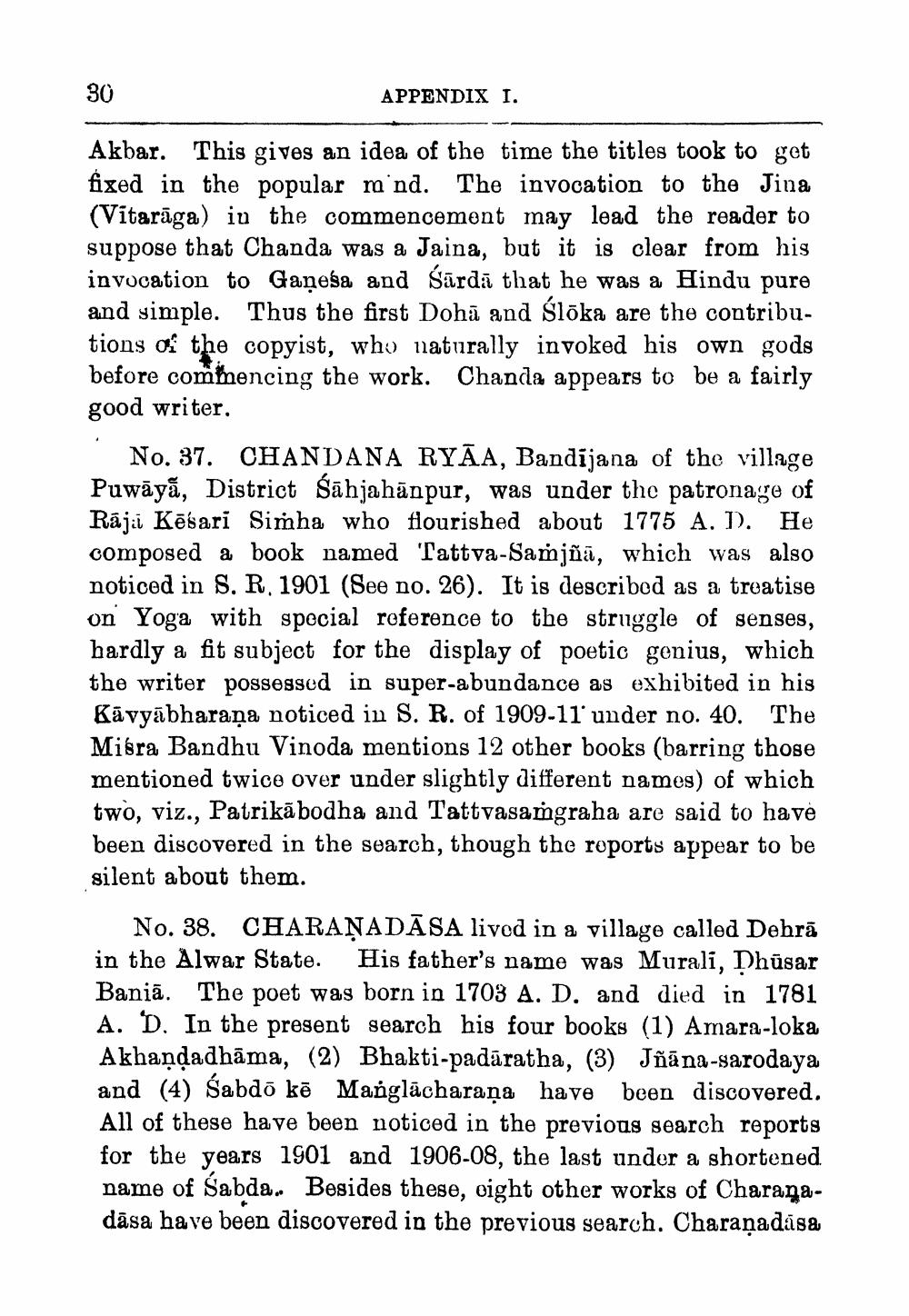________________
30
APPENDIX I.
Akbar. This gives an idea of the time the titles took to get fixed in the popular mind. The invocation to the Jina (Vitaraga) in the commencement may lead the reader to suppose that Chanda was a Jaina, but it is clear from his invocation to Ganesa and Sarda that he was a Hindu pure and simple. Thus the first Doha and Ślōka are the contributions of the copyist, who naturally invoked his own gods before commencing the work. Chanda appears to be a fairly good writer.
No. 37.
CHANDANA RYAA, Bandijana of the village Puwaya, District Śahjahanpur, was under the patronage of Raja Kesari Simha who flourished about 1775 A. D. He composed a book named Tattva-Samjña, which was also noticed in S. R. 1901 (See no. 26). It is described as a treatise on Yoga with special reference to the struggle of senses, hardly a fit subject for the display of poetic genius, which the writer possessed in super-abundance as exhibited in his Kavyabharaṇa noticed in S. R. of 1909-11' under no. 40. The Misra Bandhu Vinoda mentions 12 other books (barring those mentioned twice over under slightly different names) of which two, viz., Patrika bodha and Tattvasaṁgraha are said to have been discovered in the search, though the reports appear to be silent about them.
No. 38. CHARAṆADĀSA lived in a village called Dehra in the Alwar State. His father's name was Murali, Dhūsar Bania. The poet was born in 1703 A. D. and died in 1781 A. D. In the present search his four books (1) Amara-loka Akhaṇḍadhama, (2) Bhakti-padaratha, (3) Jñana-sarodaya and (4) Sabdō kē Manglacharaṇa have been discovered. All of these have been noticed in the previous search reports for the years 1901 and 1906-08, the last under a shortened name of Sabda. Besides these, eight other works of Charanadasa have been discovered in the previous search. Charaṇadāsa




